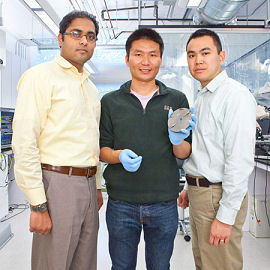
For more than a century, scientists have concluded that a species evolves or adapts by going through an infinite number of small genetic changes over a long period of time.
But research published in the journal Nature has provided some new evidence that an alternate theory is actually at work, one in which the process begins with several large mutations before settling down into a series of smaller ones.
“The question is asked, ‘If a population finds itself in some maladaptive state, due perhaps to a change in climate, how will it adapt?'” said Douglas Schemske, Michigan State University Professor of Plant Biology and a member of the research team. “The evidence that has come to light recently – both in plants and other organisms – is that the initial changes are bigger than we might have expected.”
To study the question, Schemske and his colleagues used a common plant called the monkeyflower, changing its genetic make up in a rather dramatic way to see if it would attract new pollinators – hummingbirds instead of bees or vice versa.
“We discovered that moving this single genetic region caused a dramatic increase in visitation by a ‘new’ pollinator,” Schemske said. “Specifically, the orange flowers produced on the previously pink flowered and bee-pollinated M. lewisii were regularly visited by hummingbirds but shunned by bees.
“Also, the pink flowers of the previously hummingbird-pollinated M. cardinalis were attractive to both bees and hummingbirds,” he said.
Schemske and H.D. “Toby” Bradshaw, a professor of biology at the University of Washington and the lead author of the paper that appeared in Nature, said altering the genetic region responsible for the flowers’ color is much like what could happen during a naturally occurring mutation.
“Perhaps a single mutation having to do with color changed the pollinator milieu back when there was only a single species,” Bradshaw said. “That one big evolutionary step may then have been followed by many smaller steps triggered by pollinator preferences that led ultimately to different species.”
Schemske compared the process to the repairing of a finely tuned watch.
“In our model, the first adaptive adjustments might require big changes, similar to banging the broken watch a few times before making the final small tweaks to restore its optimal performance,” he said.
The plants used in the work were produced in a campus greenhouse and then transported to an area near the Yosemite National Park where natural populations of both species occur.
“This was a rather unique aspect of the work,” Schemske said, “in that it combined molecular genetic techniques and ecological observations to elucidate the process of adaptation in natural populations.”


















Comments are closed.